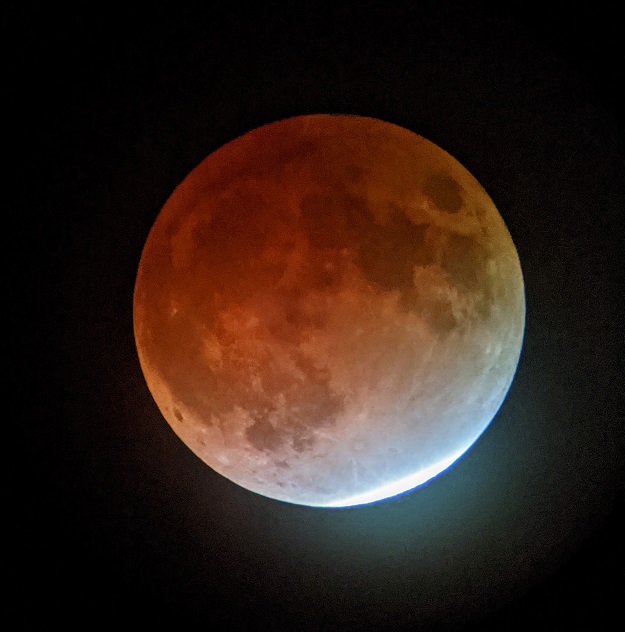Drew Sorenson shares with readers a photo he took of the lunar eclipse Nov. 19 with his cellphone.
He said he was worried clouds were going to move in, “but at 1:30 am it was beautifully clear. I set out a 6″ f/10 refractor and was able to get some pix with a cellphone,” he said. “In the west, I could see clouds approaching, and at maximum eclipse, I could see the stars start to twinkle more, and the moon’s image became less stable, but clouds moved in slowly, and this area had a good view of a colorful eclipse, and there were no mosquitoes!”
He took this photo at 1/15 second exposure at 2:59 am, shortly before the maximum eclipse.

The eclipse was considered a partial lunar eclipse even though more than 90 percent of the moon was covered by Earth. According to NASA, it was the longest partial eclipse expected this century, lasting for close to 3-1/2 hours.
The moon turns a rusty shade of red during any lunar eclipse as Earth blocks the sun’s illumination of it. The November full moon is referred to as a “frost moon or a “beaver moon,” the name Native American tribes gave it in relation to the time when beavers can be seen preparing their shelters for the winter season.
